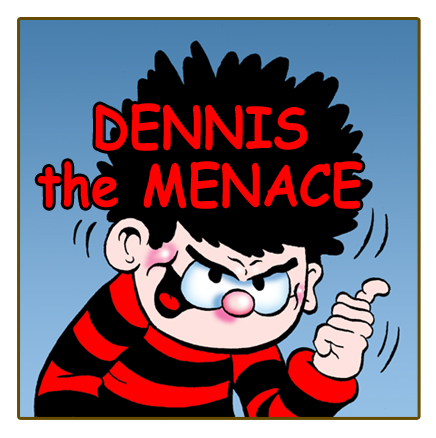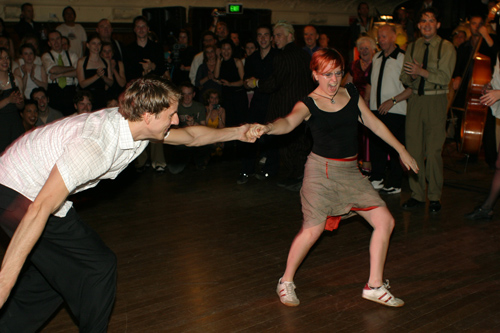Yesterday my latest copies of Continuum came yesterday. They’re part of my CSAA (or is it ANZCA?) membership deal. I tend to be slack keeping up with latest journals, but this whole posting-of-journals to me has meant I’m a little bit more up to date than I usually would be.
BUT
Last night I was reading through the tables of contents, and came across the article Social Capital Theory, Television, and Participation by Steven Maras. Now I’ve only skimmed the abstract and first couple of pages (and I must go back to it), but my attention was caught by this text quoted in the article:
Viewing and reading are themselves uncorrelated – some people do lots of both, some do little of either – but ‘pure readers’ (that is, people who watch less TV than average and read more newspapers than average) belong to 76 percent more civic organizations than ‘pure watchers’ (controlling for education, as always). Precisely the same pattern applies to other indicators of civic engagement, including social trust and voting turnout. ‘Pure readers,’ for example, are 55 percent more trusting than ‘pure viewers’.
In other words, each hour spent viewing television is associated with less social trust and less group membership, while each hour reading a newspaper is associated with more. (Putnam, 1996)
Provocative, no? Now, before you fly off and rumble out a counter/supporting argument, keep in mind the fact that Maras’ article actually begins with a bit of talk about Alan McKee and his reponse to ‘turn off a TV week’:
But why only television, and not books? When I first heard about the campaign to ‘turn off TV’, I tried to work out the logic behind it – but any reason you come up with for encouraging people to turn off TV works just as well for books, or many other parts of our everyday cultural lives. (McKee, 2002)
Now, I actually have more problems with McKee’s points than Putnam’s. Firstly, I think that the idea of ‘turning off the TV’ for a week is not so much an argument (in my mind, as I’d use it) for literally saying ‘no!’ to telly or to a particular cultural practice, but an argument for encouraging us to think more creatively about the things we a) do for fun, and b) do, cultural practice-wise.
There are many arguments which support this sort of reading of the phrase, from ‘get some exercise’ to ‘read a book’ or ‘quit consuming, stooge!’. I agree, turning off the TV isn’t such a great end in itself (I’m all for telly and its social and cultural uses), particularly when I think of all the dancers I know who spend their time either in front of a screen (watching telly or playing on the computer) or on the dance floor. In my opinion, neither is particularly conducive to excellent interpersonal skills in immediate, embodied social interaction. Nor are either in themselves bad. I think my point is that we need to get diversity up us.
But Putnam’s comment is kind of problematic as well. ‘Reading’ is kind of a blanket term, as is ‘viewer’, let alone pure (in either case). No one is a ‘pure’ reader or viewer – we are totally into diversity in our media consumption. Again, I think Putnam’s point (working just from this initial quote) should perhaps be countered with a bunch of questions about ‘what sorts of newspapers did they read?’ and ‘did they read them online, or are you just talking paper?’ (to be fair – his article does predate the internet thingy) and ‘what sorts of telly do they watch?’ and ‘do they watch alone – what is the context for their viewing?’. The latter is particularly imporant, especially when you keep in mind people like Galaxy, who is both a prodigous reader and viewer.
But I’m running on ahead of myself. I haven’t read the article yet, nor do I proof-read my blog entries or work on them for ages before publishing. I’m just pointing out the article, noting the bits in the first 2 pages (literally) that caught my eye. I will, however, be reading this very soon. After (my increasingly late) lunch, perhaps.
But this article caught my eye because I’d just been thinking about doing television studies as an academic. Frankly, I’d be crap at it, simply because I don’t watch enough telly. My previous post on my media consumption kind of points that out – that I’m writing about my sudden increase in telly -viewing points that out (I think I was also trying to say something about cross-media ideology and patterns of consumption in reference to the ABC, but I didn’t quite manage to articulate it). Mostly because I spend a lot of time doing other stuff.
But then, this argument also applies to dance. If I spent more time practicing and working on dancing, I’m sure I’d be much ‘better’. I’d certainly be fitter, which helps. But, you know, there are these other things to do. Television to be watched and all. I wonder if, to be truly good at something, you need to totally submerge yourself in it?
And then, of course, there comes the issue of whether or not an obsessive interest in a particular cultural practice is conducive to community-mindedness. Well, yes, it’s possible (esp in the case of dancing), though your notion of ‘community’ might be quite specific. And when I watch a lot of telly (esp the ABC), hell I get some politics up me, what with actually knowing what’s going on in the world.
So it’s an interesting idea. Perhaps, rather than saying ‘don’t watch telly’ (which is how McKee seemed to have interpreted ‘turn off the TV week’, rather than as ‘hey, try some new stuff this week’), we should say ‘don’t turn off your brain’. Which of course brings us back to one of the oldest stories in the cultural studies book. Can you say encoding/decoding or Stuart Hall? We aren’t passive consumers of media. I like to think of us as media users and I definitely like the phrase ‘cultural practice’, because it suggests that we do stuff with media, rather than just stooging it up.
Which I guess is McKee’s point, ultimately.
So, with these initial (and obviously circular and somewhat misinformed) comments, where am I going with this? Heck, I think it’s time to read the article.


 She does actually yell “BAM!” and she’s probably shouting “YEAH!” in a loud, Swedish-American accent in that photo.
She does actually yell “BAM!” and she’s probably shouting “YEAH!” in a loud, Swedish-American accent in that photo.